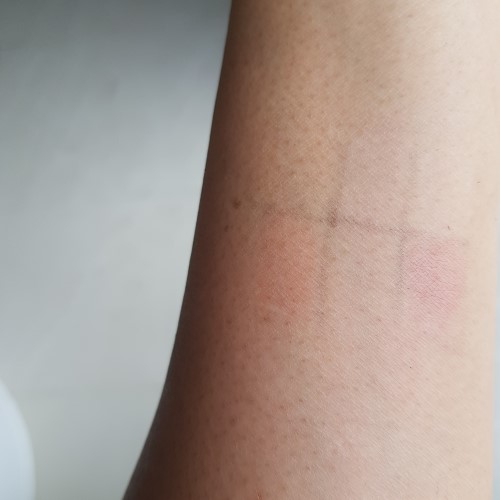Micellar waters are a very fancy name for a mild cleanser with the following characteristics: they have mild surfactants (or cleaning agents); are non-foaming and contain moisturising ingredients.
You can read about the technical detail on how micellar water or facial cleansers work at this BLOG.
What am I testing and why?
I am road-testing the Biodoerma micellar water, specifically the claim that it removes make-up.
Before photo
After applying a copious mix of waterproof, pigmented and shiny make-up, my forearm looked like this:

I then pressed down a pre-soaked (in micellar water) cotton pad on the above patch and counted to 5. Finally, I wiped over this area (quite firmly) exactly 4 times.
After photo

This is not a great make-up remover. Prominent “remains” of most make-up, especially the Colossal kajal remain. You can even see the Kay beauty eyeliner outline!
The ingredient label
This product has 16 ingredients vs. the standard 10 ingredients I’d expect to find. The principal reason is its first, trying to be a micellar water, secondly, remove make-up and thirdly, be brightening. It has a lot of extra ingredients to both brighten skin (Hexapeptide-2 and Azelaic Acid) and stabilise the emulsion (Polysorbate 2, PEG-40 hydrogenated castor oil, lysine etc).
This is a poor make-up remover because its primary surfactant (or cleansing agent) is PEG-6 Caprylic/Capric glycerides, a very gentle cleanser. While this is very good news for your skin its not great for removing make-up.
To buy or not buy?
This is a terrible make up remover, but its a gentle micellar water and I am quite excited that its also a brightening micellar water – there are not many of these around, which makes sense as (my assumption is that ) the product is not in contact with your skin for long enough to make a difference. I am going to continue using this product to see if it actually brightens skin.
I’ll keep you posted!
See also: Top 3 micellar water recommendations, based on the exact same process of reviewing multiple micellar waters
